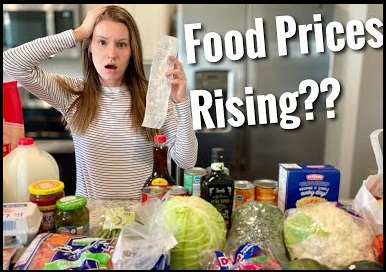Media Now Falsely Claim Biden Admin Underestimated Negative U.S. Economic Impact from Russian Sanctions
I am tired and weary of the bullshit from every side of the political continuum -particularly the professionally republican idiots- that continue to hide the reality of the situation. We are adults, let us talk honestly in the framework of reality; that will allow prudent preparation for the massive crisis we are about to experience.
 When the tenant realizes they have a leaking fish tank, they realize they are going to be financially responsible for the water damage. The tenant concocts a plan to avoid responsibility. The tenant intentionally loosens a pipe in the bathroom creating water damage, thereby hiding the fish tank leak.
When the tenant realizes they have a leaking fish tank, they realize they are going to be financially responsible for the water damage. The tenant concocts a plan to avoid responsibility. The tenant intentionally loosens a pipe in the bathroom creating water damage, thereby hiding the fish tank leak.
The owner is now on the hook for the repair. The tenant escapes liability.
The people behind Joe Biden knew their radical transformation of energy policy was going to create massive economic damage.
The people behind Biden used the opportunity of the Ukraine-Russia conflict to trigger economic sanctions they knew would worsen the global inflation damage they were creating through energy policy.
Economic sanctions against Russia were as used as the broken pipe in the bathroom to hide the energy policy fish tank leak. All of the media discussing the situation are now pretending not to know this. The conservative pundits are a combination of pretending and too stupid to actually see what is happening.
BLOOMBERG – […] There’s no sign that administration officials feel their sanctions policy was a mistake or that they want to dial back the pressure. If anything, officials have said a key US goal is to ensure Russia can’t do to other nations what it has done in Ukraine.
But the collateral damage from the sanctions has been wider than expected.
When the invasion began, the Biden administration believed that if penalties exempted food and energy, the impact on inflation at home would be minimal. Since then, energy and food have become key drivers of the highest US inflation rates in 40 years, a huge political liability for President Joe Biden and the Democratic party heading into November’s mid-term elections.
Treasury Secretary Janet Yellen has said that she “was wrong” in believing last year that inflationary pressures would pass. One of the results that she’s now seeing is related to the spike in prices due to unexpected self-sanctioning, according to one person familiar with her thinking.
So while Ukrainian President Volodymyr Zelenskiy has urged US businesses to cease operations in Russia, telling a joint session of Congress that the Russian market was “flooded with our blood,’’ the Biden administration has been encouraging some commerce, including for agriculture, medicine and telecommunications. For instance, the US government is quietly encouraging agricultural and shipping companies to buy and carry more Russian fertilizer, according to people familiar with the efforts, as sanctions fears have led to a sharp drop in supplies, pressuring food costs. (read more)
Bloomberg is running this article as a distraction, directly implying the Biden administration did not realize how much additional damage the sanctions against Russia would create. There are many articles of a similar nature by multiple outlets. All of them are designed to ignore the reality of the situation.
We are rapidly assembling data now that will allow us to give CTH readers a real-world estimate of just how damaging things are going to be.
Tracking raw materials, supply chain costs, distribution limits, advanced and sequential purchase orders, as well as inbound costs associated with the supply chain for essential goods and services, we are nearing enough data to make a prediction.
In the fall of 2021 CTH was able to provide a 100-day countdown window to the first major wave of inflationary impacts. Purchase orders cycling in net terms of 30, 60, 90 or 180 days allowed us to see the increases in product costs that were aggregating in the supply chain. Readers watched in real time as those weeks and months passed giving us the exact outcome we expected.
While we still need a little more data to make the best possible prediction for the next 120-day forecast, I am relatively certain we can give an advanced estimate today.
A current shopping cart of traditional staple items at the supermarket (full basket) is roughly $300 representing about a $75 increase in price since early January 2022. The $300 typical basket is essentially enough product to create 10 days of multiple purpose meals for the average family (4 people).
Using that $300 basket as the new baseline, I can predict the next wave of price increases will drive that single basket cost to $500 by late fall. This is the scale of inbound inflation that is going to arrive at approximately the same time as the mid-term election.
As you can tell, the next wave of price increases is significantly larger than the two that preceded it. The $300 shopping cart is going to cost around $500 when all of the increased costs are fully matriculated in the retail supply chain. This is the scale of food store inflation you should be preparing for now. Offsetting this cost increase is the challenge you should be considering right now.
More details will follow, but the final numbers are going to be close to this scale.





Post a Comment